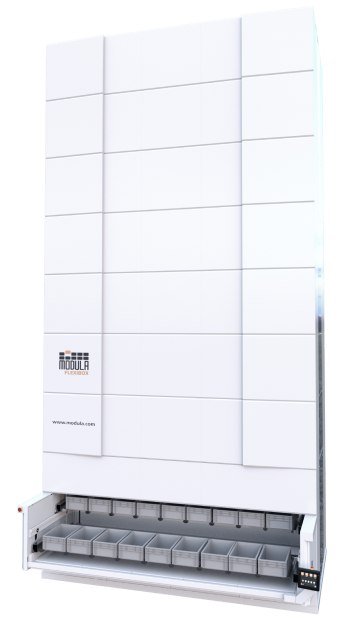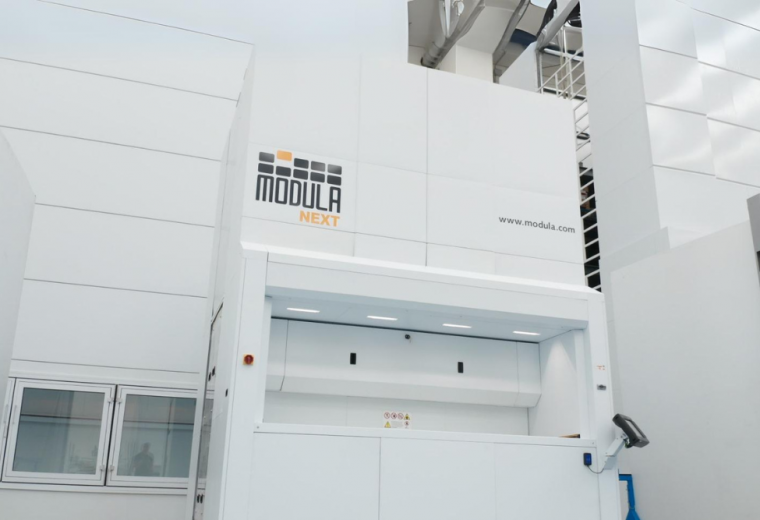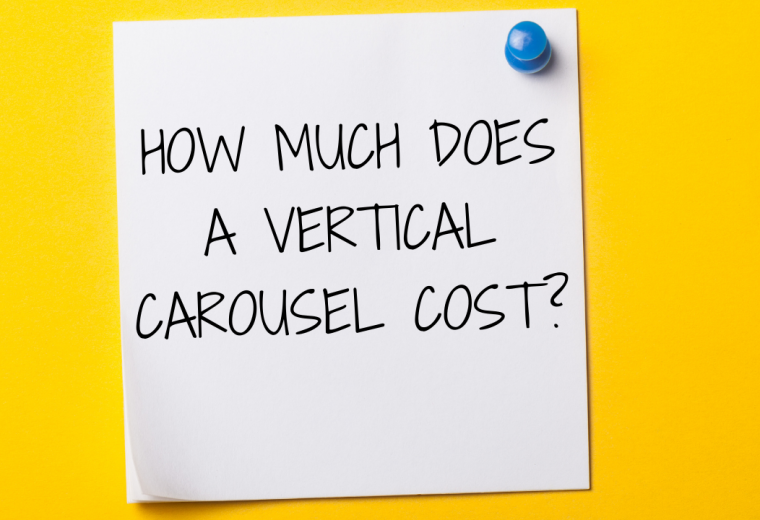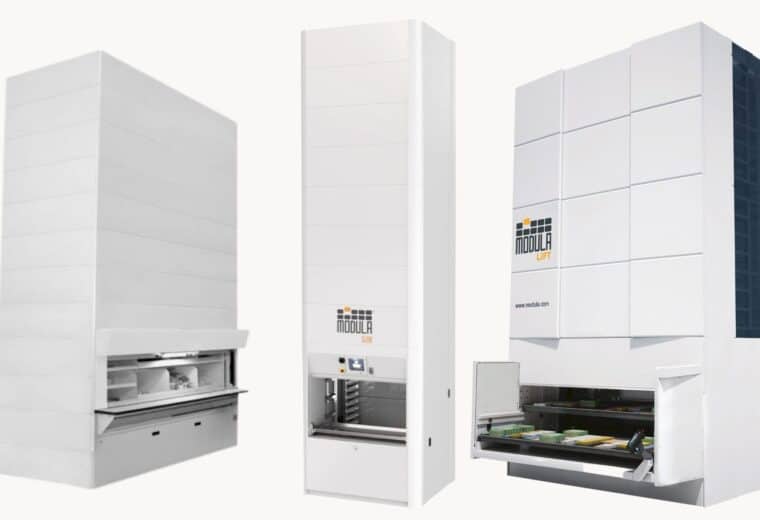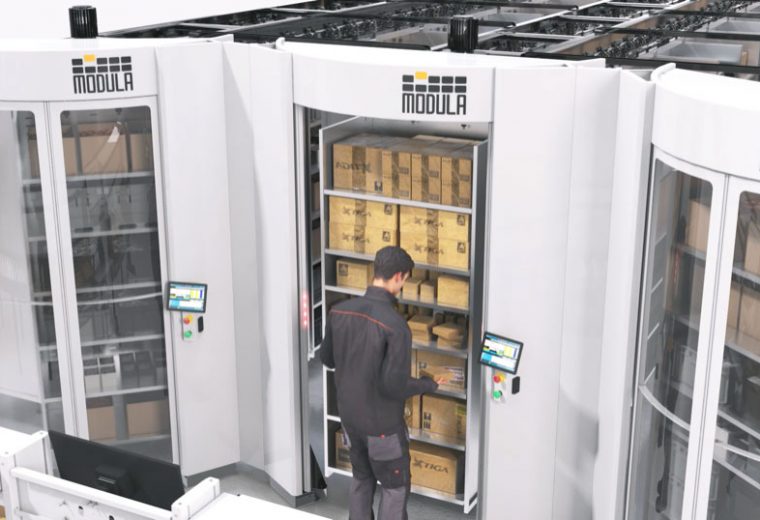Modula Flexibox vs Traditional VLM — Understanding the Differences
As warehouses face growing pressure to move faster, store more, and reduce costs, choosing the right automation system becomes increasingly important.
Vertical Lift Modules (VLMs) are among the most versatile and widely used automated storage and retrieval systems in warehouses and distribution centers worldwide. They optimize space, improve accuracy, and enhance productivity across industries, from manufacturing and retail to healthcare and e-commerce.
The Modula Flexibox is a specialized, bin-based configuration of a VLM, engineered for high-performance picking in high-volume, small-item operations. Rather than replacing traditional VLMs, the Flexibox complements them, offering a tailored solution for specific applications where speed and throughput are paramount.
In this article, we’ll break down the key differences in flexibility, workflow, and ideal use cases to help you decide which configuration is right for you.
Core Benefits of Both Modula Flexibox and Traditional VLM
Both traditional VLMs and the Modula Flexibox deliver substantial benefits, making them valuable additions to modern warehouse operations:
- Scalability and integration: Both systems offer scalability and integrate seamlessly with AMRs, conveyors, and other warehouse technologies.
- Space optimization and improved storage density: Both systems increase storage density by utilizing vertical space efficiently. This makes them ideal for facilities with tight footprints and high SKU counts.
- Increased accuracy through automation: With automated picking and inventory control, both systems improve order accuracy and reduce errors associated with manual processes.
- Improved security for stored items: Secure, enclosed designs protect stored items from damage, misplacement, or unauthorized access. This ensures inventory security and peace of mind.
- Better ergonomics and intuitive, easy-to-learn operation: Intuitive interfaces, optimized working heights, and low-strain access points support better ergonomics and fast onboarding for operators.
- Real-time inventory management when integrated with WMS: When connected to a warehouse management system (WMS), both solutions provide real-time inventory visibility for accurate tracking and streamlined operations.
How a Traditional Vertical Lift Module (VLM) Works

A traditional VLM uses a series of vertically stored trays that are retrieved by a central automated elevator. An operator selects the required item from a touchscreen interface, and the system delivers the correct tray to them at an ergonomic access bay.
Inside, trays are typically organized with adjustable partitions and dividers to create custom-sized compartments.
The VLM uses dynamic tray height sensing to scan the height of the items on each tray, automatically optimizing the storage density.
This versatility allows it to accommodate a wide variety of item sizes, shapes, and weights, from small electronics to heavy mechanical parts.
Thanks to this flexibility, traditional VLMs are suitable for nearly any industry, including manufacturing, distribution, retail, and healthcare.
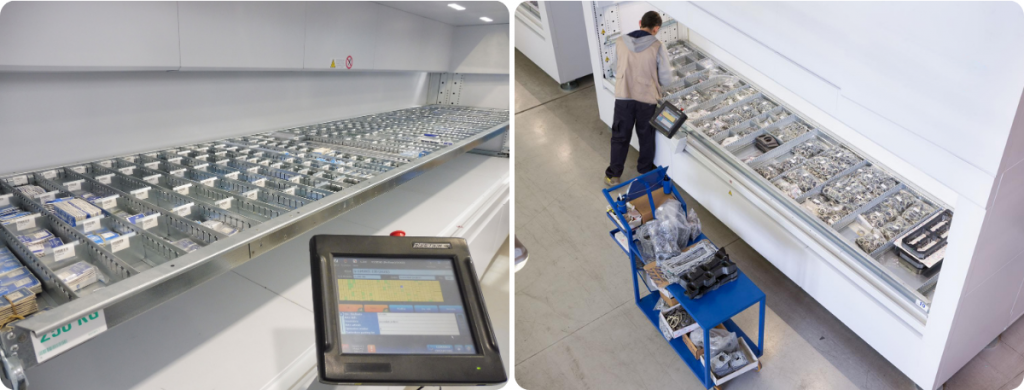
How the Modula Flexibox Works
The Modula Flexibox is a high-speed, bin-based configuration of a VLM designed for fast-moving, small-item picking. It stores inventory in standard 600 x 400 mm (23.6″ x 15.7″) bins, with up to nine bins per tray. Bins can also be subdivided to house multiple SKUs, increasing storage density and accessibility.
A central elevator with a telescopic fork retrieves the required bins and delivers them to the operator via a service tray at an ergonomic picking bay.
To boost throughput, the system uses a Buffer Bay system that prepares the next tray while the operator is still working on the current one, reducing downtime.
Powered by Smart Orders Preparation, the Flexibox uses idle time to prearrange trays based on incoming orders, speeding up picking operations. It also integrates seamlessly with traditional VLMs, making it ideal for workflows where high-turnover SKUs are picked from Flexibox, and larger or heavier items are handled by standard VLMs.
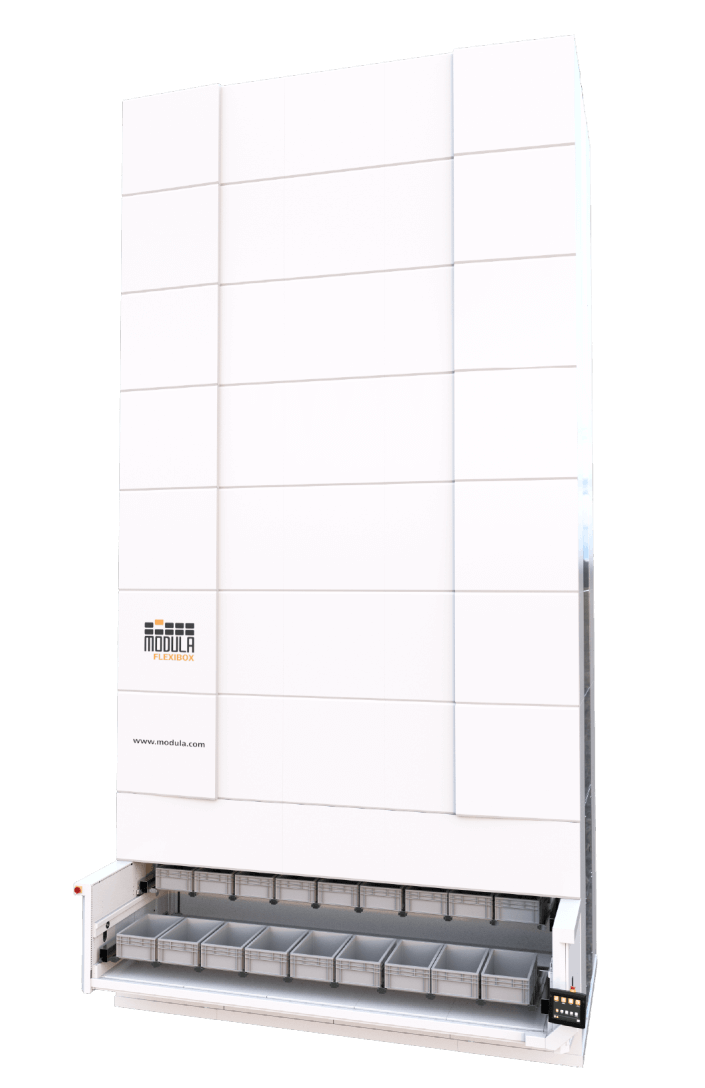
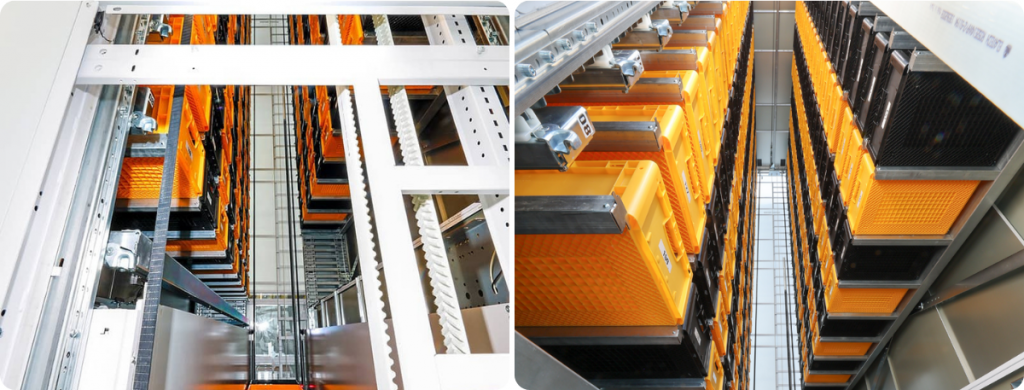
Modula Flexibox vs Traditional VLM: Quick Comparison
| FEATURE | TRADITIONAL VLM | MODULA FLEXIBOX | |
| Storage format | Trays with adjustable partitions and dividers. | 23.6″ x 15.7″ (600 x 400 mm) bins | |
| Internal Organization | Highly flexible tray layouts for various part sizes. | Up to 9 bins per service tray | |
| Primary Strength | Versatility and space optimization for mixed inventory. | High-speed throughput for small, uniform SKUs | |
| Ideal inventory | Mixed sizes, medium/large items, heavy loads | Small, high-turnover SKUs | |
| Configurations | Wide variety of tray sizes and layouts | Limited compared to traditional VLMs | |
| Batch picking integration | Easily integrated with put-to-light/carts | Easily integrated with put-to-light/carts |
Choosing the Right System: Modula Flexibox vs Traditional VLM
Choosing the right system depends entirely on your specific inventory and workflow needs. Here’s a simple breakdown:
- Choose a Traditional VLM: if your operation requires a highly flexible system that can handle a broad mix of item sizes, weights, and configurations. Traditional VLMs are designed to accommodate everything from small components to bulky or heavy items. Their adjustable tray layouts, dynamic height sensing, and high load capacity make them a strong fit for applications where SKU variability is high. They’re particularly effective in environments like manufacturing plants, maintenance operations, or distribution centers dealing with diverse inventory.
- Choose the Modula Flexibox: if your priority is fast, repeated picking of small, high-turnover SKUs. Its bin-based architecture and optimized throughput make it ideal for industries like e-commerce, retail, medical device distribution, and spare parts fulfillment. The system is engineered for speed, with a Buffer Bay to minimize wait time and Smart Orders Preparation to streamline picking during peak demand. It excels in environments where the order volume is high and SKU sizes are consistent and compact.
- Consider a Hybrid Approach: if your warehouse manages both small, fast-moving items and larger, less frequently picked inventory. Integrating Modula Flexibox with traditional VLMs allows you to assign the right system to each item type. This setup ensures optimized picking speed for lightweight parts and efficient vertical storage for heavier goods—all within the same facility. It also enables scalable automation that evolves with your operational needs, without forcing compromises on flexibility or performance.
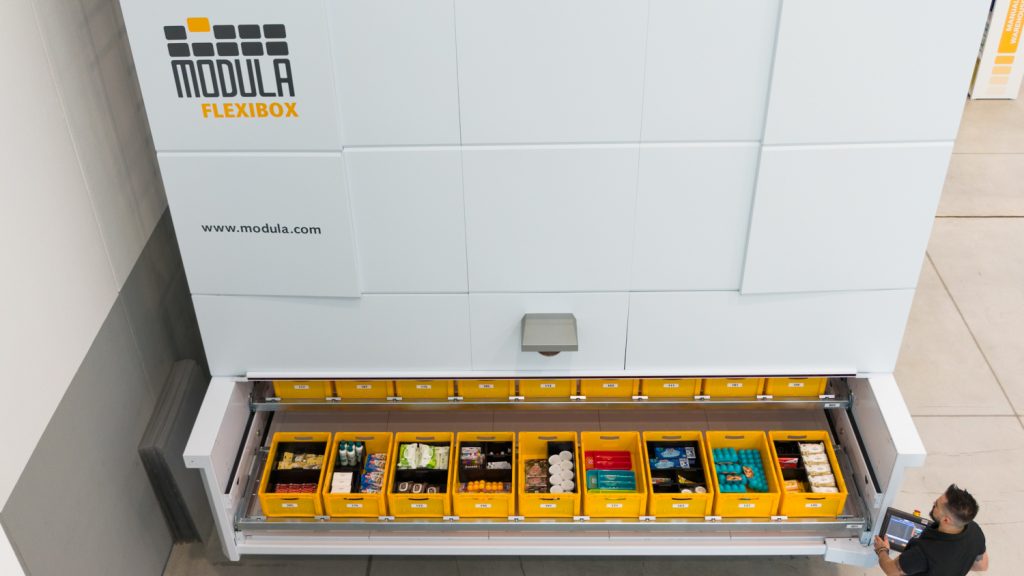
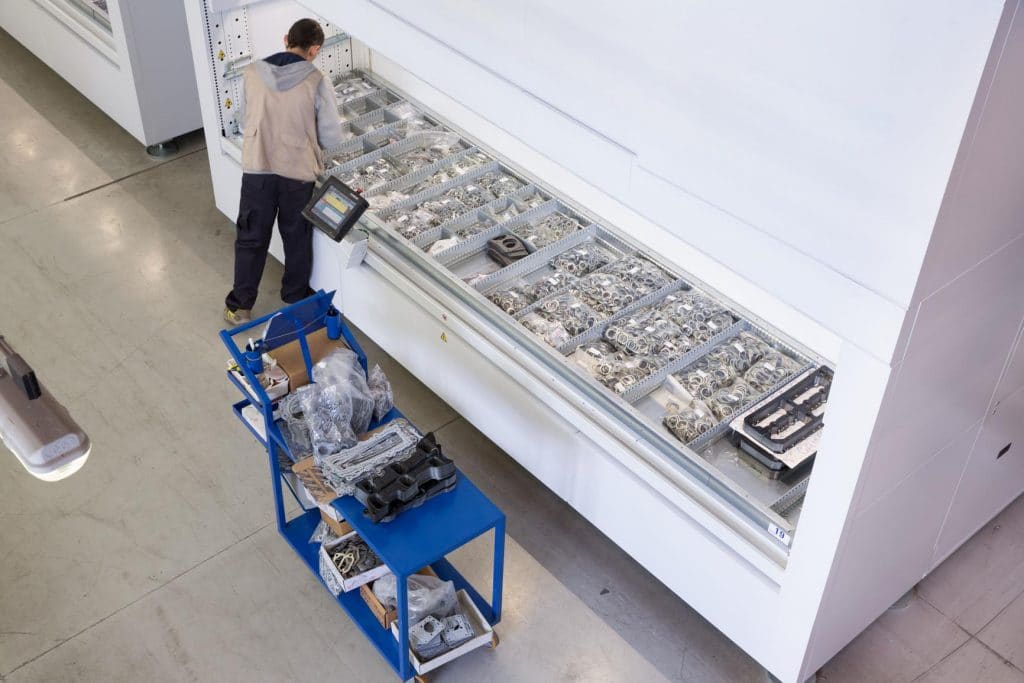
Modula VLM vs. Flexibox: Trays View
Integration with Picking Technology
Both the Modula Flexibox and traditional VLMs are designed to integrate seamlessly with a wide range of technologies, making them versatile components of a modern, automated warehouse ecosystem.
High-Throughput Batch Picking
Both solutions are ideal for batch picking, a strategy where operators fulfill many orders at once to maximize efficiency. This is often achieved using put-to-light or pick-to-light systems. The visual indicators guide the operator to distribute items across different order bins with speed and accuracy.
The Modula Flexibox particularly shines in these scenarios. Its standardized bin format is perfect for workflows using mobile picking carts or picking stations, allowing operators to fulfill 20 or more orders simultaneously and significantly increasing throughput.
WMS Integration for Real-Time Coordination
Both systems can be integrated with Modula WMS or third-party WMS/ERP software to manage inventory levels, prioritize orders, and optimize picking sequences. This connection ensures real-time visibility across your operation, enabling smarter decisions and faster order turnaround.
Compatibility with Automation Ecosystems
Whether you’re working with automated mobile robots (AMRs), conveyors, or robotic arms, both VLM configurations offer integration points to connect with other automation systems. The Flexibox’s consistent bin sizing and structured layout can make it especially suitable for robotic applications where predictability is key.
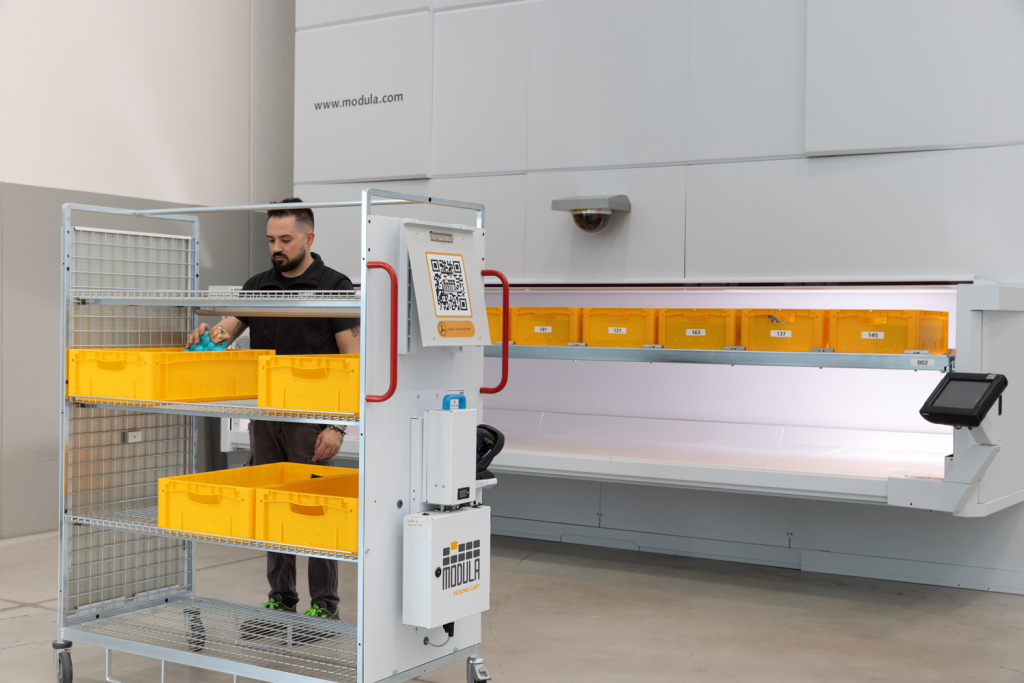

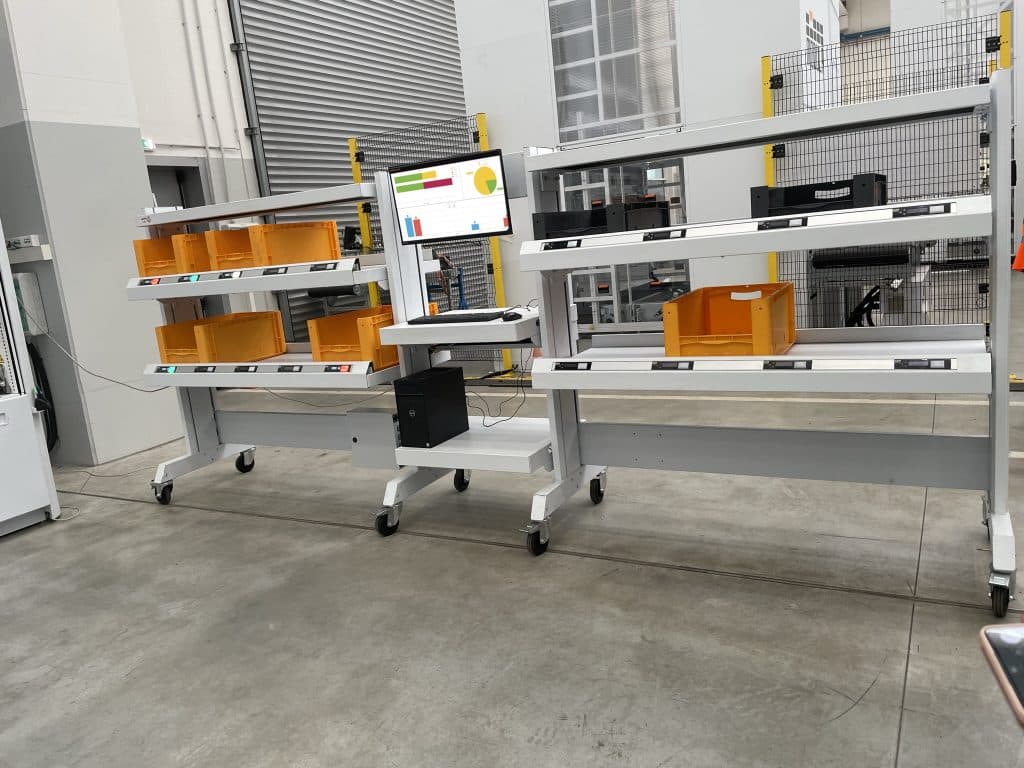
Modula Flexibox and VLMs integrate seamlessly with put-to-light or pick-to-light systems
Go Deeper: Modula’s CEO on the Flexibox Advantage
In the following video, Modula CEO Massimiliano Gigli shares the key benefits of Flexibox. He also highlights what sets it apart from traditional systems and how it supports Modula’s broader automation strategy. He also explains how Flexibox addresses today’s intralogistics challenges and why customers are already seeing significant improvements in their operations.
Conclusion
The decision between a traditional Vertical Lift Module like Modula Lift and the Modula Flexibox isn’t a matter of which system is superior. It is which configuration suits your operational needs.
A traditional VLM offers unmatched versatility, providing a robust solution for a varied inventory of all shapes and sizes. The Flexibox, in contrast, delivers specialized, high-speed performance, engineered to solve the unique challenges of high-volume, small-item picking.
Ultimately, the most effective warehouse operations often leverage a hybrid approach, using each configuration for its intended strength. By understanding this distinction, you can move beyond a one-size-fits-all solution. You can build an automated ecosystem that is not only efficient today but is also ready to scale with your business tomorrow.
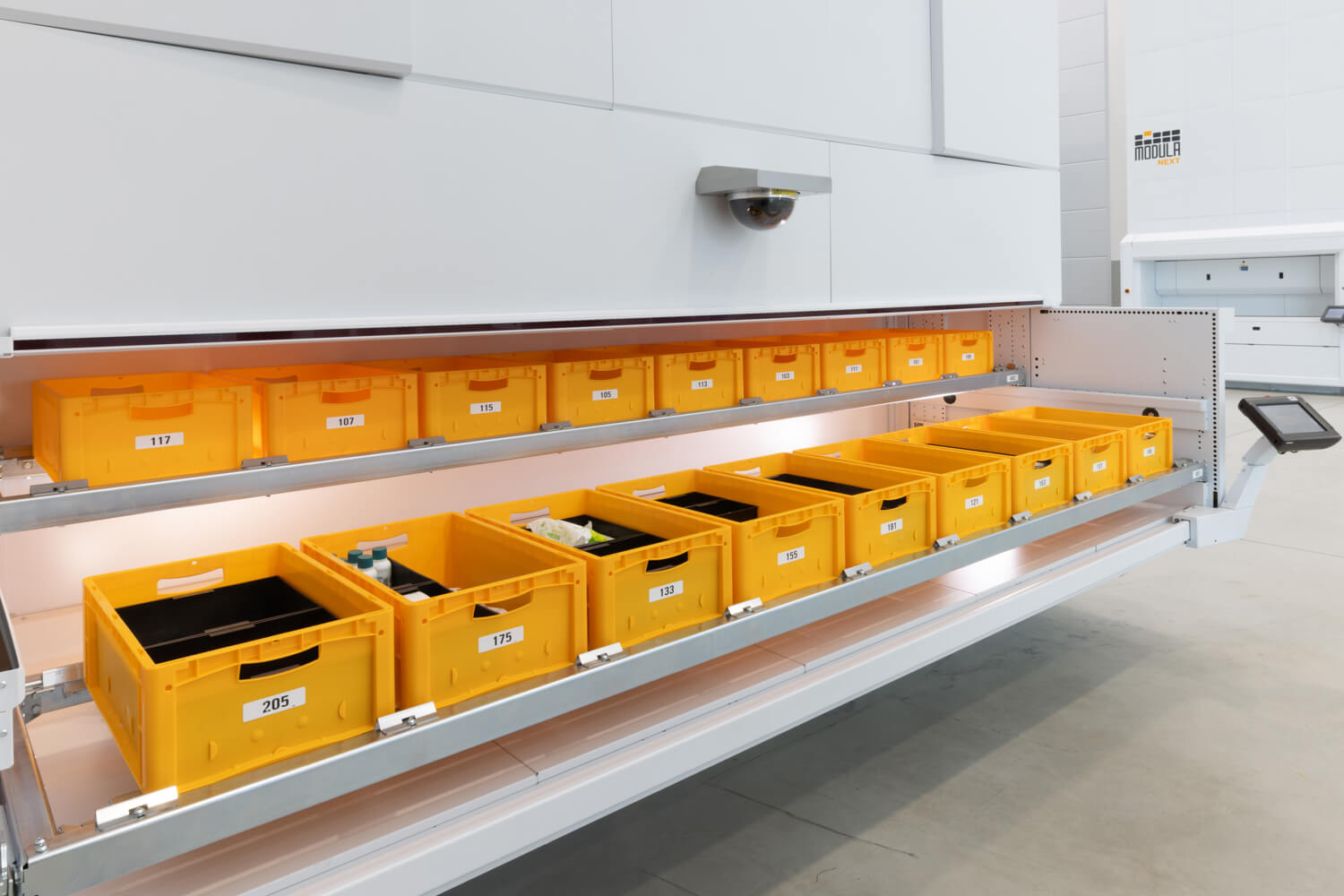
Ready to Find Your Perfect Configuration?
